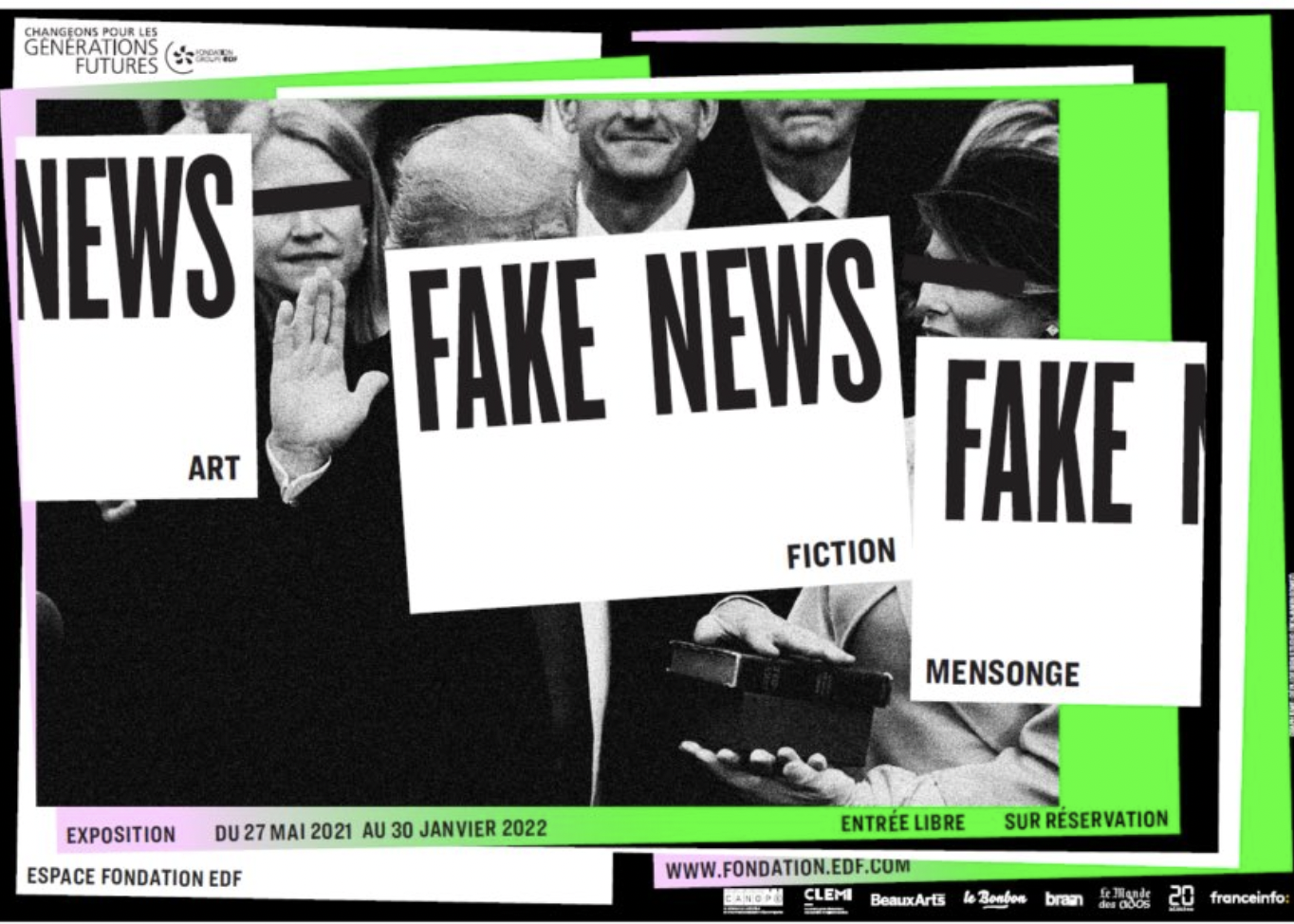‘Fake News : Art, Fiction, Mensonge’ Exposition (Fondation EDF, Paris)
Image Credit: @cdipilatre (Twitter)
Today the phrase ‘fake news’ is heard on an almost daily basis, and the French population is not alone in its hesitancy to place its trust in institutions, whether political, mediatic, or otherwise. In fact, over half of the French population use the word ‘distrust’ when describing their relationship to the media, in particular when referring to the political sphere. This question of trust is central in contemporary France, especially within the fraught social and political contexts of the upcoming presidential elections and the ongoing coronavirus pandemic.
The Fondation EDF, the philanthropic branch of the well-known power company, recently held an exhibition under the name of ‘Fake News. Art, fiction, mensonge’ (‘Art, fiction, lies’) exploring these issues. Housed discretely in a former electrical substation in the heart of Paris, the group hosts exhibitions, conferences, and debates that seek to enhance our understanding of the world. As part of its drive to build a more just and humane society, the foundation further employs its budget towards the running of various projects targeting the domains of environment, education and inclusion in France and around the world.
Forming part of its educational branch, the exhibition on fake news gathered works from French and international artists which reflect on the diffusion and spread of false information, exploring the use of art as a means of understanding the contemporary world, and the gaps that often exist between reality and perception. As those who themselves explore different ways of representing the world, artists are well placed to explore the problems regarding ‘fake news’, where fake news is considered to be the intentional creation of false stories or realities.
Stepping into the exhibition, the first work presented is a maquette displaying a war-torn city composed by the French creator of war images Alain Josseau. Surrounding this model are the cameras and equipment which translate this image onto an accompanying screen. Immediately, the spectator is shown how images can replace and subvert reality. Media is a hybrid space in which truth is not self-evident, a space where reality and fiction are perpetually intermixed. Therefore, for the reader or viewer, to differentiate between the two can be a difficult process. As quoted by Georges Braque, « La verité existe. On n’invente que le mensonge. » The production and transmission of fact as well as of fiction are subject to specific motivations linked directly to the source or publisher of information.
This links to the idea of the diffusion of ‘fake news’ in the modern world, which is explored in the exhibition after the concept of fabrication. WeRfake, a fictitious social media created through technology by Patrick Suchet is presented for example. Despite its satirical intentions, this interactive digital platform gives off the impression of being real, presenting itself as something inherently informative. It is this seeming realism alongside an intellectually passive public that fuels the disruptive and subversive capacities of the media. People rarely spend any time checking information and reflecting upon what they have just seen or read, whether this information has come from a social media network or a newspaper.
The exhibition organised by the Fondation EDF forces a reevaluation of our relationship to the media in the face of fake news. To question this relationship emerges as something crucial, to educate ourselves in relation to the present and to revive critical thinking at the expense of the passive consumption of media. In its educational mission, the Fondation EDF succeeds in placing contemporary France under a new spotlight for those who have visited its exhibition. Let us hope that this changed state of mind might reach beyond the confounds of the exhibition centre and touch the wider public, who might then react to the upcoming political events in France with a greater capacity to filter between fiction and reality, between information and misinformation.
